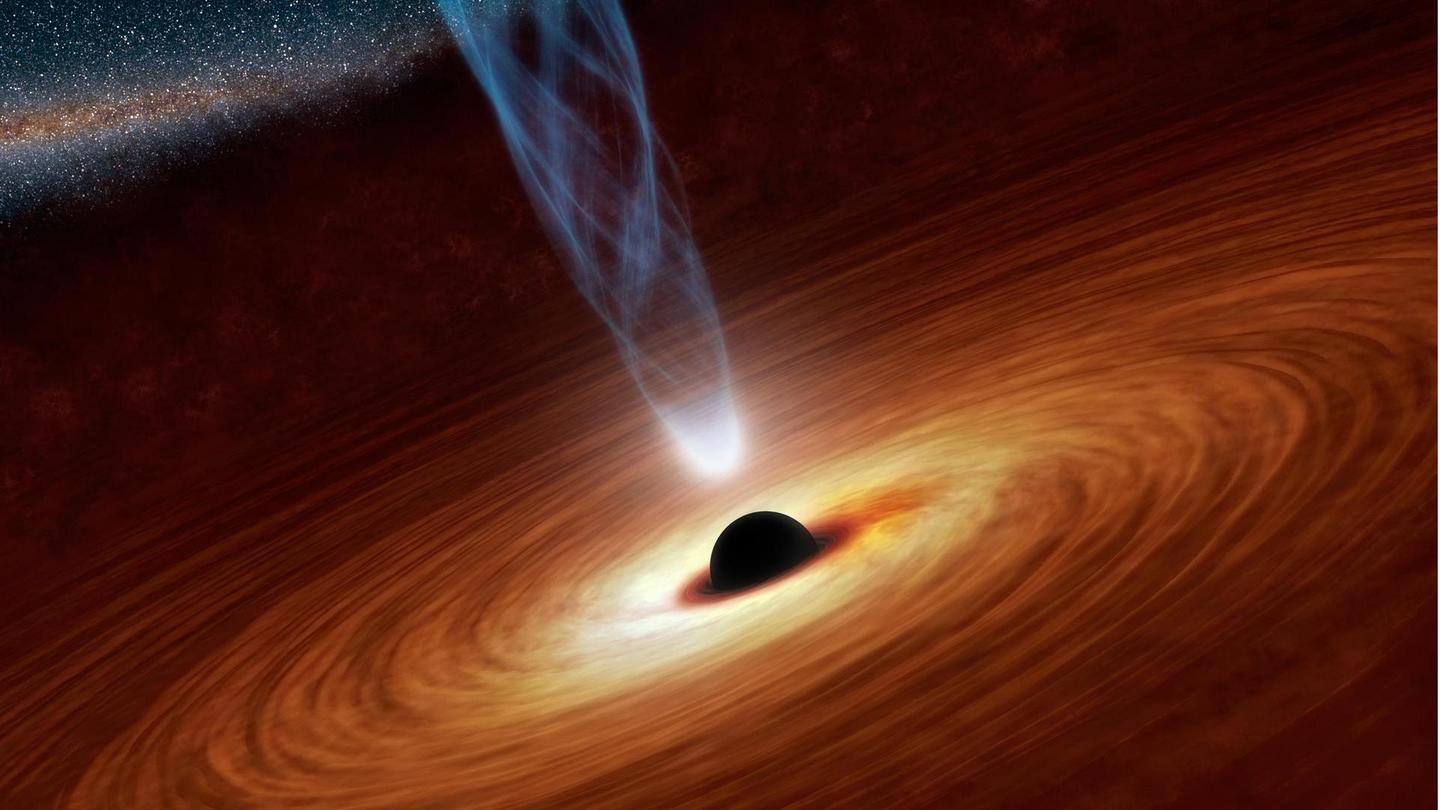
Black holes can have 'wildly different masses,' reveals study
What's the story
Physicists at the University of Queensland were dumbfounded by their discovery that black holes exhibited certain quantum properties.
Results obtained from simulation-based studies have revealed that black holes can possess different masses at the same time.
An elaborate explanation of this investigation is provided in the paper published in the peer-reviewed journal Physical Review Letters.
Context
Why does this story matter?
Black holes have always puzzled us. The first black hole to be discovered was the Cygnus X-1 in 1971. And it was only in 2019 that the first-ever photo of a black hole was released.
Extensive research over the past few decades has helped unravel some of the mysteries surrounding this celestial object and the current research now provides new insights.
Facts
First, what is a black hole?
A black hole is a place in space where the gravitational pull is so high that even light cannot come out. The gravitational force is strong because matter has been packed into a small space.
As per NASA, "most black holes form from the remnants of a large star that dies in a supernova explosion." They can be small or large (supermassive).
Premise
The latest study is based on the concept of superposition
Let us consider one of the basic concepts in quantum physics: superposition. This refers to the phenomenon where particles on a quantum scale can exist in multiple states at the same time.
It is illustrated by the classical example of Schrödinger's cat, which can be both dead and alive, simultaneously.
Such a paradox exists even for black holes, the study has revealed.
Study
Scientists investigated if black holes exhibited quantum superposition
The team developed a mathematical framework to investigate quantum properties such as mass superposition. Mass is considered one of the defining properties of black holes.
With the support of computer modeling, a simulated quantum particle was placed outside a simulated massive black hole.
The results revealed that the black hole could exist in multiple states - massive and not massive at the same time.
Explanation
Here's an explanation of the concept
"Imagine you're both broad and tall, as well as short and skinny at the same time - it's a situation which is intuitively confusing since we're anchored in the world of traditional physics," explains Joshua Foo, leader of the study and PhD scholar in theoretical physics at the University of Queensland.
"But this is reality for quantum black holes," he added.
Inference
The obtained results conform to early theories in theoretical physics
The team of researchers inferred that their results were in accordance with the theories proposed by Jacob Bekenstein, an Israeli-American theoretical physicist who made fundamental contributions to the foundation of black hole thermodynamics.
"Our modeling showed that these superposed masses were, in fact, in certain determined bands or ratios - as predicted by Bekenstein," stated Dr. Magdalena Zych, co-supervisor of the research.